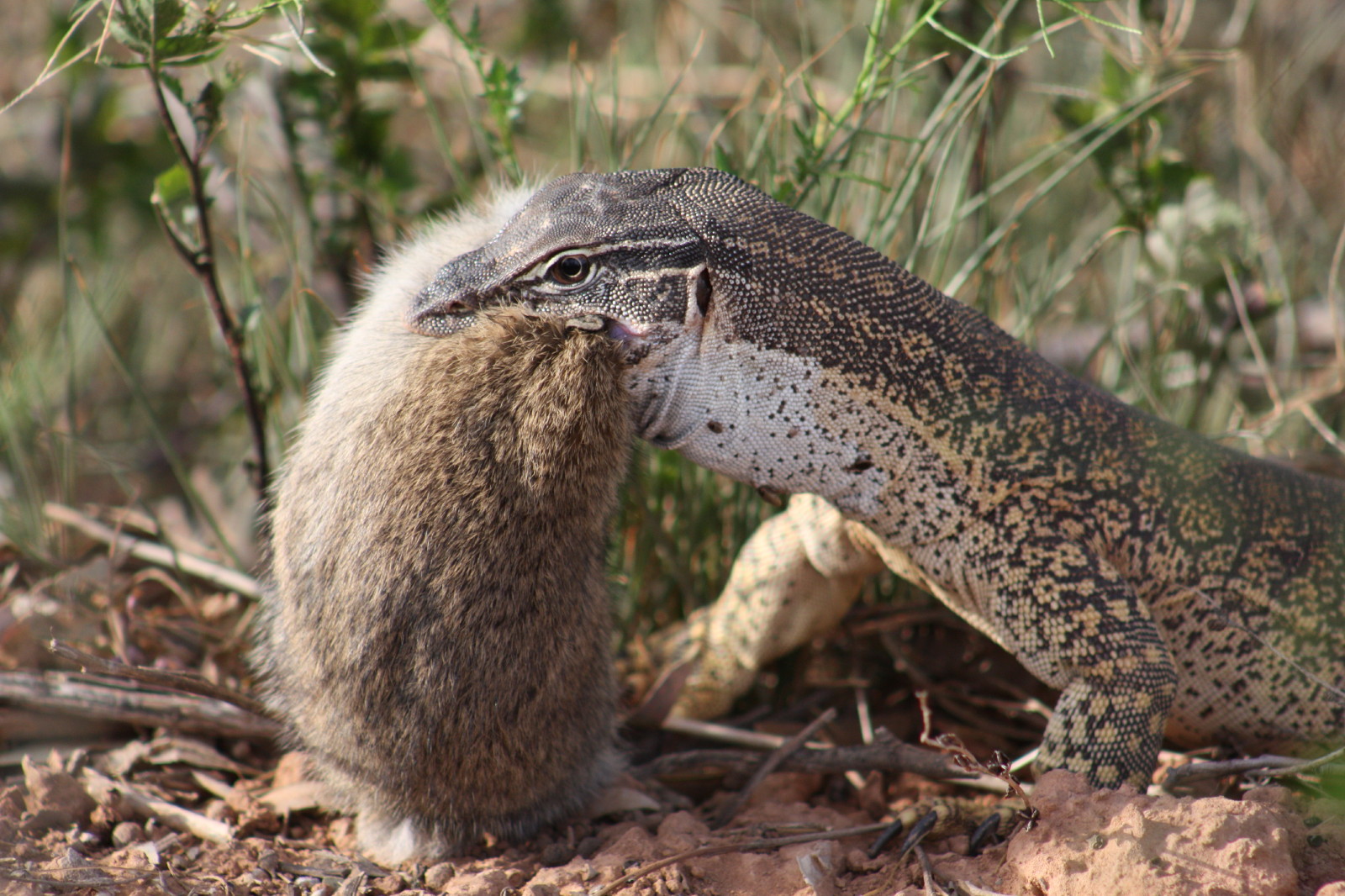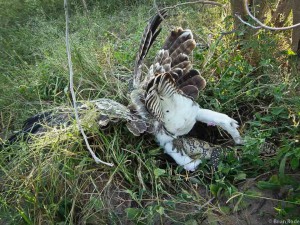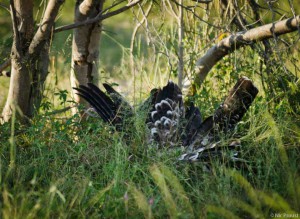
+- WildFact (https://wildfact.com/forum)
+-- Forum: Information Section (https://wildfact.com/forum/forum-information-section)
+--- Forum: Terrestrial Wild Animals (https://wildfact.com/forum/forum-terrestrial-wild-animals)
+---- Forum: Reptiles and Birds (https://wildfact.com/forum/forum-reptiles-and-birds)
+---- Thread: Monitor Lizards (excluding V. komodoensis) (/topic-monitor-lizards-excluding-v-komodoensis)
Pages:
1
2
Monitor Lizards (excluding V. komodoensis) - Paleosuchus - 12-23-2016
A thread to share data as well as photographs of various members of Varanidae.
For starters...
Behavioral plasticity and activity in Varanus salvator, the Asian water monitor
Mammal-like Feeding Behavior of Varanus salvator and its Conservational Implications*
"Lumpini Park is a fenced 58 ha public park located
in the heart of Bangkok, surrounded by a hyper-urban
environment and heavily trafficked roads
The park is open to the public during daytime hours
and is usually teeming with people engaged in jogging
and other sporting and recreational activities. Lumpini
Park includes a notable (and probably dense) population
of V. salvator. I have seen monitors of all size-classes
– from small juveniles (ca. 30 cm in total length [TL])
to very large adults of 2.5 m TL or more (estimated
from a distance). The monitors are easily spotted, either
swimming in the ponds or canals or on the shores, usually
within10 m from the water’s edge. Less frequently, they
may move away from the water – 50 m or more from
the water’s edge. Juveniles and small adults (< ca. 80
cm TL) climb trees, concrete fences and other manmade
structures. The monitors also regularly enter the
park’s underground draining system. Contrary to most
other places in Thailand, people refrain from fishing in
Lumpini Park, therefore the ponds seem to hold sizable
populations of fish, turtles and other aquatic animals. I
have observed water monitors feeding on walking catfish
(Clarias sp.), swamp eels (Fluta alba), barbs (Puntius
sp.), suckermouth catfish (Hypostomus plecostomus),
Asian box turtle (Cuora amboinensis) and food leftovers
discarded by picnickers in the park. The V. salvator of
Lumpini Park are habituated to humans and seem to
be indifferent to their presence at distances of 2-3 m or
more. Below 2-3 m, they usually flee (usually into the
water) or display various threatening postures.
At 1405 h on 6 January 2010, I spotted a V. salvator
(ca. 140 cm TL; estimated from a distance + another ca.
10 cm of missing tail tip) outside the fence surrounding
Lumpini Park, ca. 5 m from a water canal. The monitor
was engaged in eating a suckermouth catfish H.
plecostomus (ca. 45 cm TL, estimated from a distance).
At first, the monitor tore a hole in the skin and bore its
head into the body, much like a vulture eating softer
inner parts of a carcass. It then proceeded to rip the
body apart with its jaws using its forefeet for assistance,
consuming smaller chunks of meat at a time. By
1440 h, a substantial amount of the fish had been eaten;
parts which remained included the head, pectoral fins,
vertebral column, and tail.
At 1453 h, the monitor
succeeded in severing the vertebral column, separating
the hind part of the body (altogether ca. 20 cm), and
took less than 3 min to swallow it whole in an anteriorposterior
orientation. During this process, the
monitor stopped all eating activities and observed me
motionlessly for ca. 2 min. What remained of the fish at
this stage included most of the head, especially the hard
dorsal part covered with bony shields, the pectoral fins,
and about 10 cm of the anterior spinal cord that remained
attached to the head. The monitor then left the
fish, defecated, and foraged in the area for ca. 5 min,
using typical varanid foraging behaviors, eating smaller chunks of meat and other leftovers from
the fish that were scattered in the immediate vicinity.
At 1503 h, the monitor returned to the remains of the
fish carcass and continued to rip it apart. At 1505 h, it
yawned, then unsuccessfully tried to tear off parts of
the head. It then moved ca. 4 m away from the fish,
walked under the fence into the park and then returned
to the vicinity of the fish where it resumed foraging,
characterized by thorough searching accompanied by
repetitive tongue flicks, traveling back and forth into
and out of the park. At 1515 h, another two V. salvator
emerged from the nearby canal (ca. 2 m and 1 m TL). At 1525 h, it began to rain and the observation was
terminated. The net observation time for the feeding
behavior lasted 70 min and was carried out from a distance
of 3-4 m. Although the feeding monitor usually ignored
me completely, it does appear that my presence did cause
minor disturbance since it occasionally stopped eating to
observe me and the surroundings for 5-30 sec. before resuming eating; these pauses infrequently lasted
longer than a minute (1-2 min). On several occasions,
the monitor carried the fish 3-5 m away from me in an
effort to continue eating behind vegetation and a fence.
It is well known that V. komodoensis occasionally
preys on feral domestic horses and water buffaloes
(Auffenberg, 1981) that obviously cannot be swallowed
wholly. In terms of feeding and foraging behavior and
hunting tactics, V. komodoensis constitutes a category
of its own, somewhat detached from other varanids
(Auffenberg, 1981). There are no reports on such
a behavior in V. griseus, but it cannot be ruled out
(Stanner, 1983). Morphologically, there is no reason
why V. griseus (or other medium-sized varanids that
are strong enough) would not use such prey-handling
techniques. In that respect, unlike snakes whose teeth
are posteriorily curved, conical and round in transversesection,
and adapted only for holding the prey in place
and preventing it from sliding out of the mouth during
the process of swallowing, the teeth of Varanus are
bi-laterally compressed and serrated (Mertens, 1942;
Gaulke & Horn, 2004), which enables cutting and tearing
off pieces of flesh. Karunarathra et al. (2008) observed
a 2 m V. salvator swallowing a 50 cm suckermouth
catfish in the Bellanawila-Attidiya Sanctuary in Sri
Lanka; hence, it can be concluded that water monitors
are capable of either swallowing suckermouth catfish
wholly, or ripping them apart into smaller pieces with
their jaws and feet as described above. The monitor in
Bellanawila-Attidaya was 2 m long (vs. 1.4 or 1.5 m
in Lumpini Park) and the fish – 50 cm (vs. 45 cm in
Lumpini Park); therefore, predator/prey length-ratio in
Bellanawila-Attidaya was 4, vs. 3.1 or 3.3 respectively
in Lumpini Park. It can therefore be postulated that
upon attempting to eat a suckermouth catfish, or any
other type of prey for that matter, V. salvator considers
either or all of the following factors: the species of the
prey, its morphology, and the predator/prey size-ratio.
If the predator/prey size ratio is large, the monitor
will consume the prey in the easiest and quickest way
possible, by swallowing it whole. If the predator/prey
size ratio is not large, or if the prey’s morphology makes
it too difficult, hazardous or impossible to swallow, the
monitor will rip the prey apart instead.
...
Monitor lizards are the most loathed animals in
Thailand, and of the four species native to Thailand, V.
salvator is by far the most loathed. The Thai name for
this species is “Hia”, which is considered an extremely
offensive and abusive word that Thais are reluctant to
even mutter. Due to their unpopularity, Thais do not
consider monitor lizards in general, and water monitors
in particular, as worthy species for protection and
conservation. Varanus salvator can eat suckermouth
catfish of all size-classes; hence, they may now have
an opportunity to change their negative image, become
the main biological controller of suckermouth catfish,
and help save fresh-water ecosystems of Thailand.
Moreover, V. salvator routinely scavenge for food and
are capable of eating decaying carrion (Stanner unpub.
data; Traeholt, in Bennett, 1998). Water monitors can
eat large prey by ripping it apart (this study) and are
capable of eating carrion of all size-classes including
human corpses (survey in Bennett, 1998). Contrary to
the general public, Thai officials that are responsible
for the management and maintenance of fresh-water
ecosystems usually acknowledge the important role of
water monitors in maintaining sanitation in fresh-water
reservoirs and ecosystems, all of which may be useful
for promoting the conservation of this species."
*Cite:
STANNER, MIcHAEL. "Mammal-like feeding behavior of Varanus salvator and its conservational implications." Biawak 4.4 (2010): 128-131.
A remarkable Feeding Behavior and a new distribution record of Varanus salvator salvator (laurenti, 1768) in eastern sri lanka
Abstract
We describe a unique feeding behavior of Varanus s. salvator observed within lahugala national park, sri lanka. the lizard was observed lashing its tail quickly from side to side while submerged in a shallow waterhole, which displaced water and fishes from the waterhole onto the land. More than 30 fishes were expelled onto the land, of which many were subsequently consumed by the monitor. This observation highlights the significance of isolated waterholes in the dry zone to sustain wildlife populations during the dry season, and represents a new distribution record for V. s. salvator in eastern sri lanka.

*This image is copyright of its original author

*This image is copyright of its original author
Observations on Varanus s. salvator in North Sulawesi
Abstract
Asian Water Monitors (Varanus s. salvator) are widespread on the main island of Sulawesi,
Indonesia, but rather rare in the province of North Sulawesi because of human predation. This study
documents observations on the daily behavior of a small coastal population over a two week period.
Observations of aquatic behavior led to discussion of the possibility that this population is able to catch
live fish in a particular coastal lagoon.

*This image is copyright of its original author
Link to study
RE: Monitor lizards (excluding the Ora) - Ngala - 12-23-2016
Varanus salvator
Photo and information credits: Suhas Anand
"From Sri Lankan forests Yala National Park, a lovely monitor lizard ; reminiscent of prehistoric times; it uses its tongue to "smell" for prey. The fork helps collect smell from different direction for it to triangulate which way to go for food."

*This image is copyright of its original author
RE: Monitor lizards (excluding the Ora) - Paleosuchus - 12-24-2016

*This image is copyright of its original author
The above is from from the book Lizards: Windows to the Evolution of Diversity
There is also this interesting V.gouldii/V.gilleni interaction, i thought was pretty interesting to read

*This image is copyright of its original author
Varanus gouldii with rabbit

*This image is copyright of its original author
Varanus giganteus with another monitor lizard

*This image is copyright of its original author
This video is amongst my favorites, a young rock monitor steals a fish from a crab....and then goes on to eat that crab
RE: Monitor lizards (excluding the Ora) - Paleosuchus - 01-04-2017
Captive Varanus kingorum

*This image is copyright of its original author
RE: Monitor lizards (excluding the Ora) - Paleosuchus - 01-06-2017
Young captive bell phase Lace monitor (Varanus varius)

*This image is copyright of its original author
RE: Monitor lizards (excluding the Ora) - Paleosuchus - 01-11-2017
Neat videos i've found
Brief interaction between a big water monitor and bearded pigs
Varanus(tristis?) eats a skink
Bell phase lace being mobbed by birds
Lace monitor with possum kill in a tree, the adults seem to have a strong like for them
Just cool footage of a lace eating a sausage in a tree
Water Monitor eating a snake in Singapore
RE: Monitor lizards (excluding the Ora) - Paleosuchus - 01-13-2017
Nile monitor v martial eagle

*This image is copyright of its original author
"Yesterday has to go down as one of the weirdest coincidences I can remember! A few hours after posting a Martial Eagle pic with a warthog kill on this page, we were out on drive in the Linyanti trying to get photos of some Redheaed or Cardinal Queleas that had been sighted a week before. Anyway we got stuck in some soft sand and as we were digging ourselves out we heard a big crash next to us…we quickly swung around assuming it was an elephant sneaking up on us only to find a juvenile Martial Eagle had just caught a huge Nile Monitor right next to our car…the crazy thing about the sighting was that it was a stale mate…the eagle had the monitor and the monitor had the eagle pinned to the ground. After about 5 minutes they both gave way and the monitor took refuge in an open burrow. We then had a somewhat injured and bewildered Martial for more than an hour walking right up to us looking for his catch that got away…it eventually got dark and the Martial was still in the area…would be interesting to see what happened this morning, but one thing for sure is the Martial was not giving up!

*This image is copyright of its original author
17:42 we heard this massive crash! It felt like ages that the Martial was stuck in this position…we were thinking…is it dead
There was this stale mate here as the Martial had the monitor but the monitor, using its tale, had the inexperienced bird pinned to the ground face down (see top pic) !
Eventually after maybe 5 minutes the stale mate is over and the eagle gets away and the monitor moves down into a shallow burrow.
The eagle flew into a Kalahari appleleaf a few metres away from us allowing us to snap away. It wasn’t at all nervous and ignored us. Maybe because it was slightly in shock.
After a few minutes we had this Martial running around us like a chicken on a sidewalk in Maun and posing nicely for photos. He was not scared and approached us within a few metres. This posing continued for more than an hour until after sunset. The eagle was doing its best to relocate the lizard but to no avail!
Then the next day guides were in the area and the Martial was still there…whether it had caught the lizard again or not we can’t say but it definitely was playing the waiting game to try and catch its hard fought meal!"
http://www.bush24.com/blog/martial-eagle-vs-nile-monitor"]http://www.bush24.com/blog/martial-eagle-vs-nile-monitor
RE: Monitor lizards (excluding the Ora) - Tshokwane - 01-14-2017
Credits to Rob the Ranger.
Two water monitors fighting close to the river. Filmed at Idube Game Reserve in South Africa.
RE: Monitor lizards (excluding the Ora) - Paleosuchus - 01-26-2017
Lace monitor kills a python
http://www.reptilesmagazine.com/Video-Monitor-Lizard-Makes-Quick-Work-of-Python-in-Noosa-Australia-trending/
RE: Monitor lizards (excluding the Ora) - Ngala - 02-01-2017
Varanus niloticus
Photo and information credits: Justin Rhys Nicolau Photography
Nile Monitor - Varanus niloticus
Borakalalo National Park, North-West Province
17 September 2011
Nile Monitors can grow to about 9 ft (2.7 m) in length and are commonly found on the banks of rivers sunning themselves - their nostrils are placed high on the snout, indicating that these animals are highly aquatic, but are also excellent climbers and quick runners on land. Nile Monitors feed on fish, snails, frogs, crocodile eggs and young, snakes, birds, small mammals, large insects, and carrion.
In South Africa they are commonly referred to as "leguaan," from the Dutch for iguana.

*This image is copyright of its original author
RE: Monitor lizards (excluding the Ora) - Tshokwane - 02-01-2017
Credits to Jaci's Sabi House.
The resident monitor lizard crossed through camp on its way to attempt to raid a birds nest. Image by Jessica Shillaw.

*This image is copyright of its original author
RE: Monitor lizards (excluding the Ora) - Ngala - 10-14-2017
Varanus albigularis
From Sabi Sabi Private Game Reserve:
"A relatively large Rock Monitor was checking cavities in a dead tree for potential bird nests in order to raid the nest site and consume some nutritious eggs."

*This image is copyright of its original author
RE: Monitor lizards (excluding the Ora) - Ngala - 10-17-2017
Varanus niloticus
Photo and information credits: Atkinson Photography and Safaris
"A Nile monitor (Varanus) on the hunt for prey and using its tongue to sample the air. Image from an Okavango photosafari with Eyes on Africa and captured with a Canon EF 500L f4 IS ii and 1DX. Shutter speed 1000sec at f5.6, iso 400. Handheld."

*This image is copyright of its original author
RE: Monitor Lizards (excluding V. komodoensis) - Ngala - 01-30-2018
Varanus albigularis
From Sabi Sabi Private Game Reserve:
"A Rock Monitor searches in the knot of a Marula Tree, expecting to find a meal."

*This image is copyright of its original author
RE: Monitor Lizards (excluding V. komodoensis) - Spalea - 08-20-2019
Water monitor at Kruger National park.